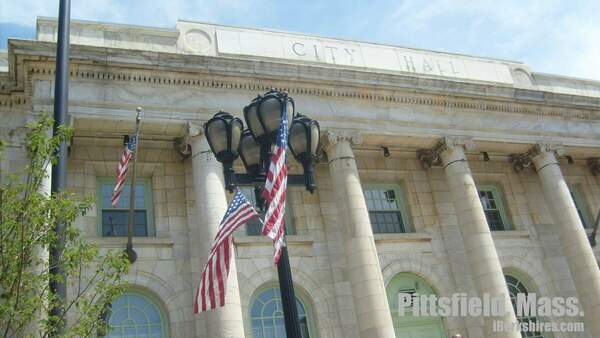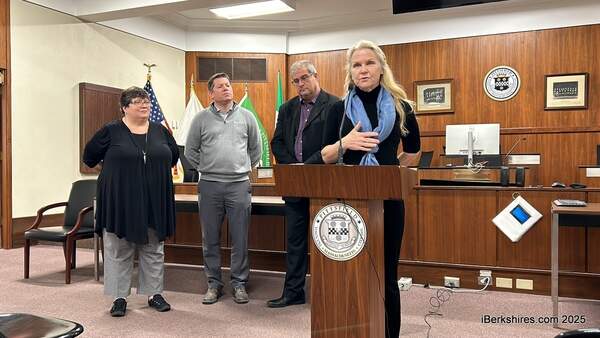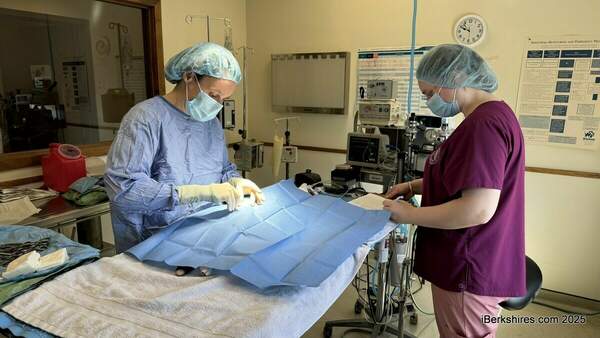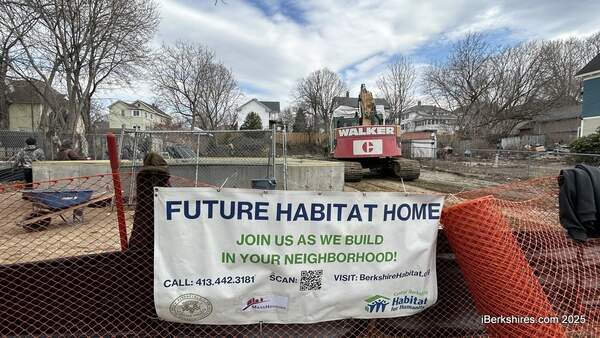
State Auditor Bump Releases Rural Rescue Plan for Western Mass
.jpg)
PITTSFIELD, Mass. — State Auditor Suzanne Bump is calling for a rural rescue plan to fill the gaps after her latest study showed deficiencies in Western Massachusetts public infrastructure.
She proposes an increase of state Chapter 90 road funding from $200 million to $300 million annually, the creation of a public infrastructure agency to assist communities with project designs and funding applications, and expanded access to broadband internet while lowering costs for customers.
"This should be among our highest priorities as we decide how to equitably allocate our current state surplus, our nearly $5 billion in federal [American Rescue Plan Act] funds, and the federal infrastructure money still to come," Bump said at a media roundtable on Monday.
"There's never been, and probably never will be again, such a tremendous opportunity to reverse decades of disinvestment in our rural communities, especially in the four counties of Western Mass: Berkshire, Franklin, Hampden, and Hampshire."
Her office's new study "Public Infrastructure in Western Massachusetts: A Critical Need for Regional Investment and Revitalization," analyzed roadways, culverts, and bridges; municipal buildings; and broadband internet as public infrastructure categories and found they were all under-resourced in the Western part of the commonwealth.
A survey that was sent out to the 101 cities and towns in the area received 45 replies, which officials counted as a healthy sample.
She is to debut her findings to the Joint Committee on Ways and Means Committee on Tuesday and will advocate for infrastructure investment in these counties. The hearing will be livestreamed here.
Bump said textile mills, paper mills, and other employers left towns in Western Mass and there was not the same knowledge economy to take its place as there has been in the eastern end of the state.
Berkshire County residents can attribute some of this to General Electric's impact on Pittsfield.
The result, she said, is cash-strapped towns with shrinking populations and labor forces, declining property values, maxed-out tax levy capacity, and crumbling infrastructure. Bump added that these are deterrents to the capital investment necessary to reverse these trends.
"When you consider some of the common characteristics of these 101 cities in towns, you see that they have a median population of 1,800, an average population of 8,000, and that's factoring in the urban areas of Greenfield, Holyoke, Pittsfield, and Springfield," She explained.
"Many major property owners in many of these towns are tax-exempt agencies and land trusts, some of these communities have the highest property tax rates in the commonwealth, municipalities are unable to pave roads to replace culverts or repair bridges. We see fire hoses without running water, new fire trucks that remain outside year-round because they're too big to fit in old fire stations and public buildings which, if they were in private hands, they will be condemned as well as internet speeds that are among the slowest in the commonwealth."
Bump used the Pittsfield Police Station's booking desk as an example of a public safety property that needs attention.
"This police station is often used as a prop, as a backdrop in the making of films that want to depict a decrepit 1940s, 1950s police station," she said.
The state auditor called a need for the Small Town Road Assistance Program (STRAP) to be restructured to support the state's smaller towns. In the fiscal year 2020, 65 percent of STRAP applicants were from communities in Western Mass but only five ended up receiving awards for projects.
The funding program also has a million-dollar cap on awards and Bump said the average culvert replacement now costs around $850,000. The general rule of thumb is a mile of road costs $1 million.
Bump also said the formula for Chapter 90, which provides municipalities with an annual funding source for improvements and investments in local transportation networks, needs to be changed to take into consideration the community's road miles and ability or inability to fund improvements.
If these recommendations aren't followed, Bump said it would not be a "very rosy picture." This investment, she explained, is needed to reverse the trend of declining property values and populations and makes it easier for commerce to be conducted virtually and physically.
Though she recommended the use of ARPA funds for infrastructure investments, there have not been any specific dollar amount recommendations made.
"I think, like everyone, I would love to see more money infused into the particularly local budget, and transportation and economic development, housing, as soon as possible," she later said in regard to the ARPA funds. "But I think that since the money does not all need to be spent at one time that it should not be spent at run time and, and the deliberative process that the legislature is taking is I think an appropriate one."
A 2020 report issued by Bump revealed that the commonwealth's payments in lieu of taxes (PILOT) program for state-owned lands (SOL) is underfunded and negatively affects smaller rural communities in Western Mass compared to larger, wealthier communities in the eastern part of the state.
In July, she joined state and local elected officials and stakeholders to tour two sites in Franklin County that demonstrate the disadvantaged effects of the program and begin a conversation with hopes of sparking change.
During this visit, she said the report conducted by her office showed the PILOT program's lack of funding but also indicated that smaller communities that aren't economically growing at the same rate as heavily populated eastern communities are being disadvantaged.
On Monday, Bump recognized that the rural rescue plan was not the first time that the Division of Local Mandates has focused on Western Mass and cited her time living in Great Barrington when she saw the reality of the east/west divide.
Tags: ARPA, Chapter 90, state auditor,















